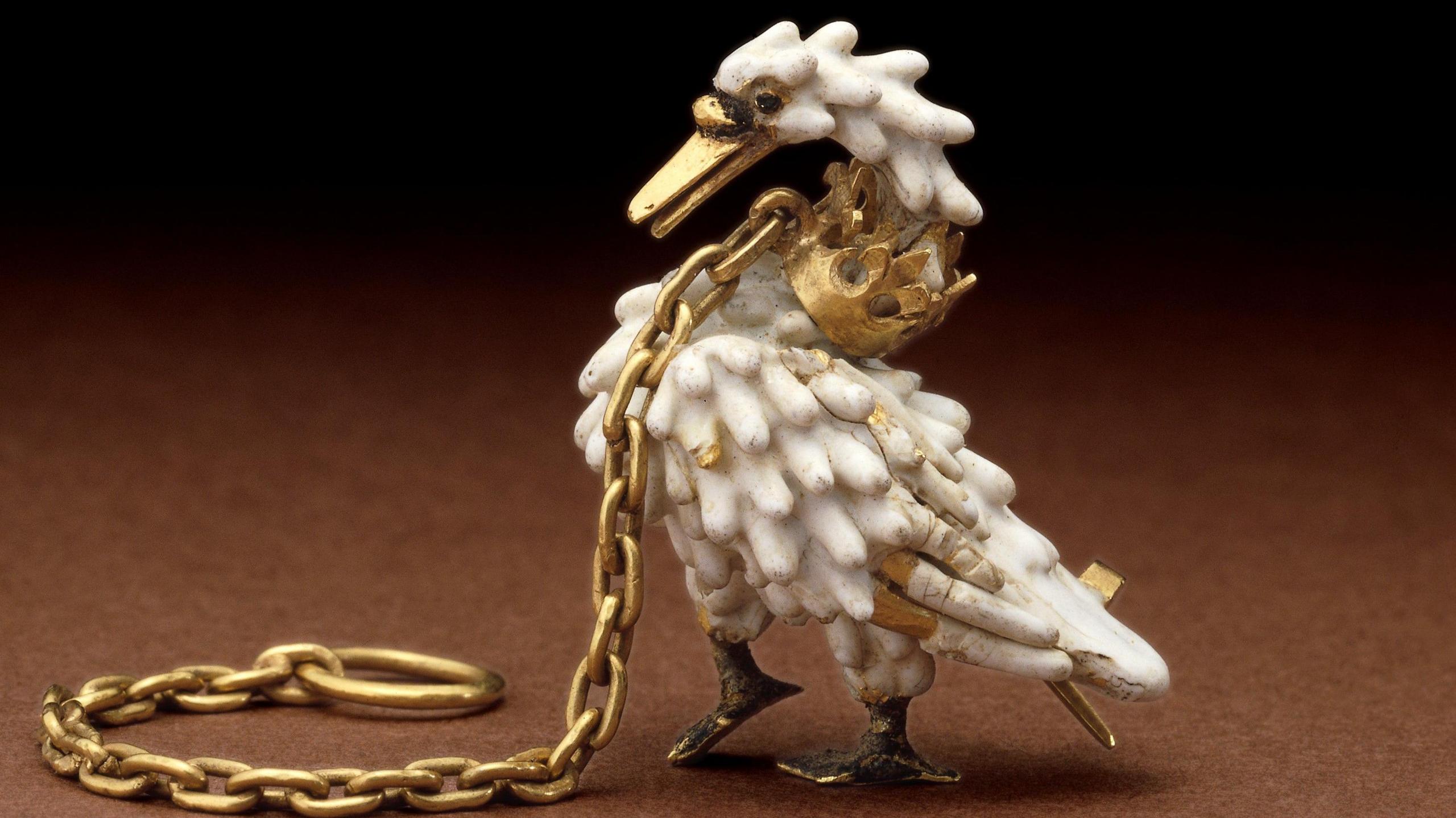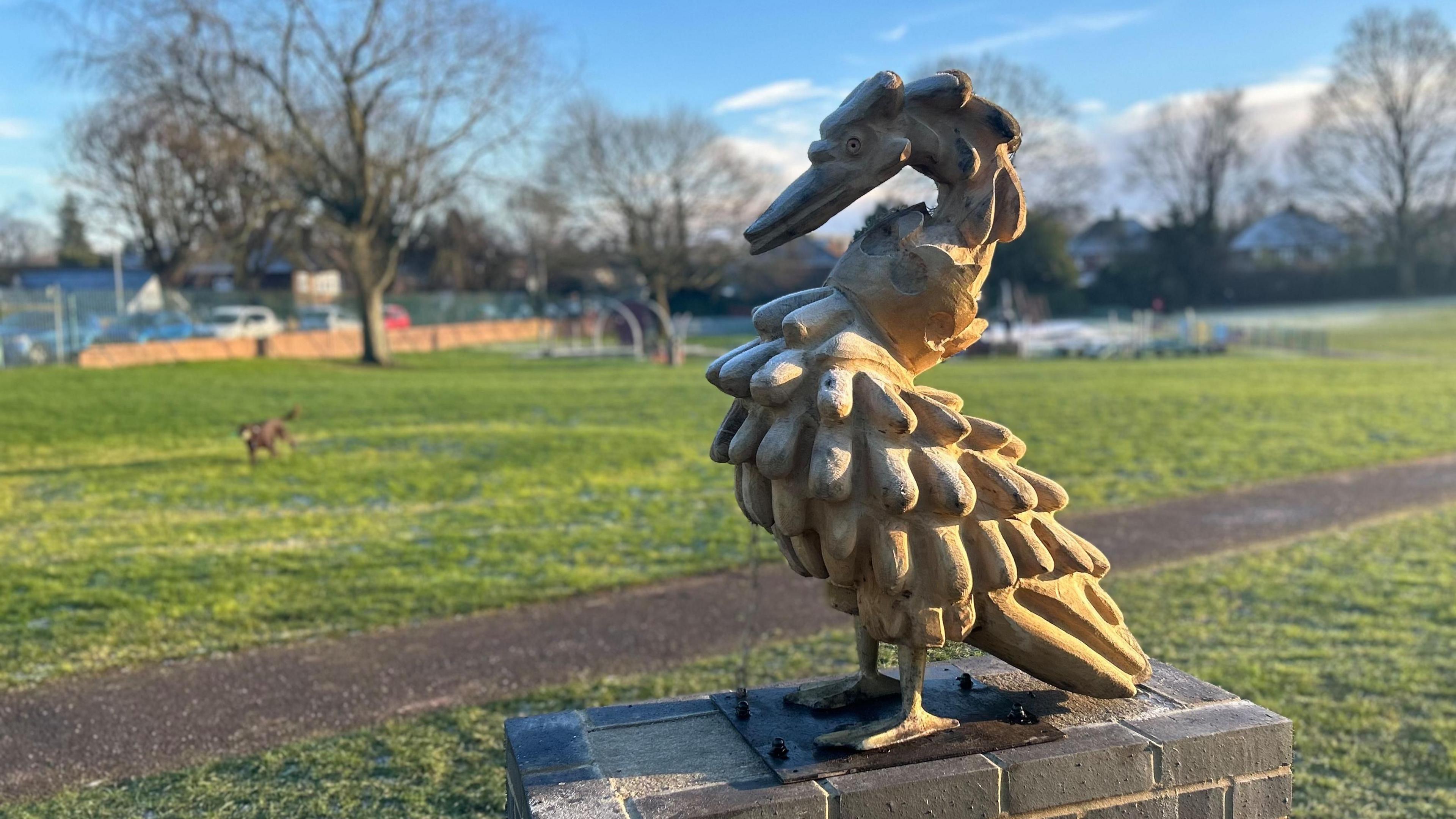Discovery of medieval brooch marked with statue

The jewel's detailed craftsmanship included a coronet around the swan's neck
- Published
The discovery of a medieval brooch believed to belong to King Henry V is being celebrated with a statue.
The Dunstable Swan Jewel, which is now in the British Museum, was uncovered during excavation work at the site of the Bedfordshire town's Friary in 1965.
A replica statue made from English oak has now been erected at the nearby Bennett Memorial Recreation Ground.
The gold and enamel brooch, crafted around 1400 AD, is shaped like a swan and believed to symbolise allegiance to the powerful House of Lancaster.

The statue made from English Oak was commissioned by Dunstable Town Council
The statue by sculptor Peter Leadbeater is part of an initiative funded by Historic England's High Street Heritage Action Zone which celebrates the town's history.
Mayor of Dunstable Louise O'Riordan said it was a "really big deal" which "just goes to show that Henry V was here" and there was a long history of royalty in the town.
She said: "I think people have a lot of respect for the history of the town and people will respect what (the statue) represents."
O'Riordan said "it is a massive part of our history" and hopefully people will see it in the park and do some research and learn more about Dunstable.
Dunstable Town Council said the statue was the third in a series of six planned sculptures aimed at celebrating the town's history.
Councillor Liz Jones, chair of the community services committee, said: "The Swan Jewel is a proud emblem of Dunstable's rich heritage and this stunning new statue ensures its story is preserved for generations to come."
She added: "It's wonderful to see our town's history celebrated in such a meaningful and creative way. We're excited to continue this journey and reveal the next sculptures.''
The swan inspired by Henry V’s Dunstable brooch
Get in touch
Do you have a story suggestion for Beds, Herts & Bucks?
Follow Beds, Herts and Bucks news on BBC Sounds, Facebook, external, Instagram, external and X, external.